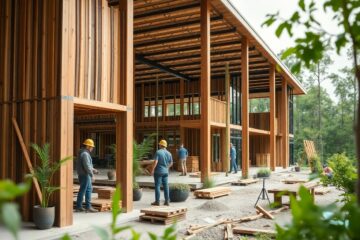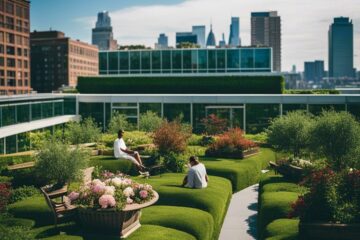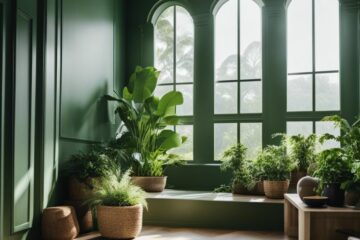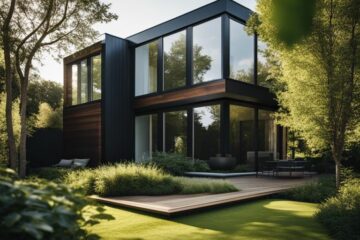Welcome to our guide on creating an eco-friendly oasis right on your balcony. In urban environments, every square foot counts, so maximising your outdoor space is necessary. By following our simple but impactful tips, you can transform even the smallest balcony into a sustainable and vibrant retreat. From choosing the right plants to utilising space-saving design solutions, we will show you how to make the most of your balcony while minimising your environmental footprint. Get ready to elevate your outdoor space and enjoy the benefits of connecting with nature, right at home.
Table of Contents
Planning Your Eco-Friendly Balcony
Designing an eco-friendly balcony can have a significant impact on both your living space and the environment. By carefully planning and considering various factors, you can create a sustainable outdoor space that not only enhances your living experience but also contributes to a healthier planet.
Factors to Consider in Balcony Design
When planning your eco-friendly balcony, it is important to consider several key factors. Sunlight exposure is crucial for selecting the right plants and determining the placement of any solar panels. Water drainage is another critical consideration to prevent water accumulation and potential damage to your balcony structure. Wind exposure should also be taken into account to ensure the durability of any furniture or features you plan to include.
- Sunlight exposure: Choose plants that thrive in your balcony’s sunlight conditions.
- Water drainage: Install proper drainage systems to avoid water logging.
- Wind exposure: Select durable furniture that can withstand windy conditions.
Thou, by carefully considering these factors, you can design a balcony that is not only eco-friendly but also functional and sustainable in the long term.
How to Maximise Your Small Space
Maximising your small balcony space requires creative thinking and strategic planning. Utilise vertical space by installing hanging planters or shelves to grow more greenery without taking up valuable floor space. Incorporating multi-functional furniture such as foldable chairs or tables can help maximise space when needed and provide flexibility for different activities.
Furthermore, choosing the right lighting can create a warm and inviting atmosphere while also conserving energy. Consider using solar-powered lights to reduce your carbon footprint and save on electricity bills.
Selecting Green Materials and Plants
Tips for Choosing Sustainable Building Materials
When designing an eco-friendly balcony, it is crucial to select sustainable building materials that have a minimal impact on the environment. Here are some tips to help you make the right choices:
- Recycled materials: Opt for building materials that are made from recycled sources, such as recycled plastic decking or reclaimed wood for furniture.
- Natural finishes: Choose paints, stains, and sealants that are low in volatile organic compounds (VOCs) to reduce air pollution indoors.
- Locally sourced: Support local businesses and reduce carbon emissions by selecting materials that are sourced locally.
This will not only minimise your carbon footprint but also contribute to a healthier indoor environment for you and your family. Choosing sustainable building materials is a significant step towards creating an eco-friendly balcony space that has a positive impact on the planet.
Choosing the Right Plants for Your Balcony Ecosystem
In the context of creating an eco-friendly balcony, choosing the right plants is necessary for building a thriving ecosystem. Here are some factors to consider when selecting plants:
- Native plants: Opt for native plant species that are well-suited to your climate and require minimal water and maintenance.
- Edible plants: Consider growing edible plants such as herbs, fruits, and vegetables to create a sustainable food source right on your balcony.
By selecting the right plants for your balcony ecosystem, you can create a green oasis that not only enhances the visual appeal of your outdoor space but also attracts beneficial wildlife such as bees and butterflies. This will help promote biodiversity and contribute to a healthier environment overall.
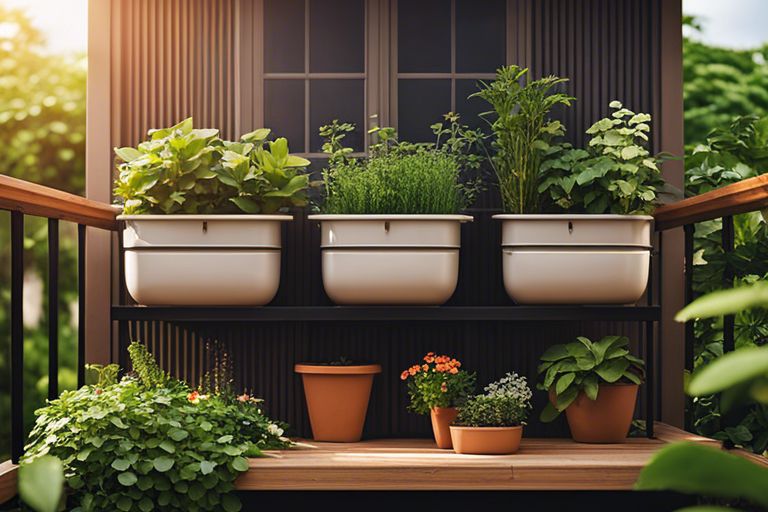
Implementing Eco-Friendly Practices
When designing an eco-friendly balcony, it’s crucial to implement sustainable practices that reduce waste and conserve resources. By incorporating eco-friendly solutions into your balcony design, you can make a significant impact on the environment.
How to Set Up a Balcony Composting System
Composting is a fantastic way to reduce food waste and create nutrient-rich soil for your balcony garden. To set up a balcony composting system, you will need a small bin, some brown (carbon-rich) materials like dried leaves or newspaper, and green (nitrogen-rich) materials such as fruit and vegetable scraps. Layer the brown and green materials in the bin, ensuring proper aeration by turning the compost regularly. Over time, the organic matter will decompose into compost that can be used to fertilise your plants, creating a sustainable cycle of growth and waste reduction.
Remember to avoid adding meat, dairy, or oily foods to your balcony compost bin, as these can attract pests and create unpleasant odours. By maintaining a healthy balance of brown and green materials and regularly tending to your compost, you can minimise waste and nourish your balcony garden naturally.
Water Conservation Methods for Balcony Gardeners
Water conservation is paramount for eco-friendly balcony gardening, especially in urban areas where water resources may be limited. Consider installing a rainwater harvesting system to collect rainwater that can be used to hydrate your plants. Additionally, opt for drip irrigation systems or watering cans with spouts to deliver water directly to the plant roots, minimising evaporation and water waste.
Another effective water conservation method is to mulch your plant containers with materials like bark chips or straw. Mulch helps retain soil moisture, reducing the need for frequent watering. By incorporating these water conservation practices into your balcony garden routine, you can conserve water and promote a healthier environment for your plants to thrive.
Maintenance and Upkeep
Ensuring the maintenance and upkeep of your eco-friendly balcony is crucial to sustaining its beauty and functionality. By following a regular maintenance routine, you can enjoy a vibrant and thriving outdoor space that positively impacts the environment.
Seasonal Tips for Balcony Maintenance
1. Clean and inspect your balcony at the start of each season to remove debris and check for any damage.
2. Trim and prune your plants as needed to encourage healthy growth and prevent overcrowding. Remember to fertilise regularly to promote blooming.
The key to maintaining a flourishing balcony garden is to stay proactive and address any issues promptly.
Troubleshooting Common Issues in a Balcony Garden
Pertaining to troubleshooting common issues in a balcony garden, prevention is always better than cure. Keep an eye out for signs of pests, nutrient deficiencies, or overwatering to address them early.
One of the most dangerous problems you may encounter is root rot, which can quickly spread and kill your plants. The key is to act swiftly by adjusting your watering routine and providing proper drainage.
Note, a healthy and thriving balcony garden is the result of diligent care and attention to detail. By staying vigilant and proactive in your maintenance efforts, you can create an eco-friendly oasis that brings joy and benefits to both you and the environment.
Small Space, Big Impact – How To Design An Eco-friendly Balcony
In summarization, designing an eco-friendly balcony may seem challenging with limited space, but with thoughtful planning and creativity, it is very much achievable. By incorporating elements such as vertical gardens, recycled materials, energy-efficient lighting, and water-saving techniques, you can create a green oasis that not only benefits the environment but also enhances your living space. These small changes can make a big impact on reducing your carbon footprint and promoting sustainability. So, let’s embrace the opportunity to bring nature into our urban homes and design balconies that not only look beautiful but also contribute to a more eco-friendly lifestyle.
FAQ
Q: Why is it important to design an eco-friendly balcony?
A: Designing an eco-friendly balcony is important as it helps reduce our environmental footprint by incorporating sustainable practices and materials.
Q: What are some eco-friendly materials that can be used for balcony design?
A: Some eco-friendly materials for balcony design include recycled plastic furniture, sustainably sourced wood decking, and natural fibre rugs.
Q: How can plants be incorporated into an eco-friendly balcony design?
A: Plants can be incorporated by using vertical gardens, hanging planters, and native species that require less water and maintenance.
Q: What are some energy-efficient options for balcony lighting?
A: Energy-efficient options for balcony lighting include solar-powered LED lights, motion sensor lights, and using candles or lanterns for a more ambient setting.
Q: How can water conservation be practised on a balcony?
A: Water conservation can be practised by installing a rainwater harvesting system, using a drip irrigation system for plants, and choosing drought-resistant plant species.

Our contributing author is a passionate advocate for eco-friendly living and sustainability. With a background in eco-life, they are dedicated to inspiring and empowering individuals to adopt environmentally conscious lifestyles. Through insightful articles, they share practical tips, innovative solutions, and thought-provoking perspectives to promote a greener, more sustainable world. Join them on the journey towards eco-smart living and discover how small choices can make a big impact. 🌱



